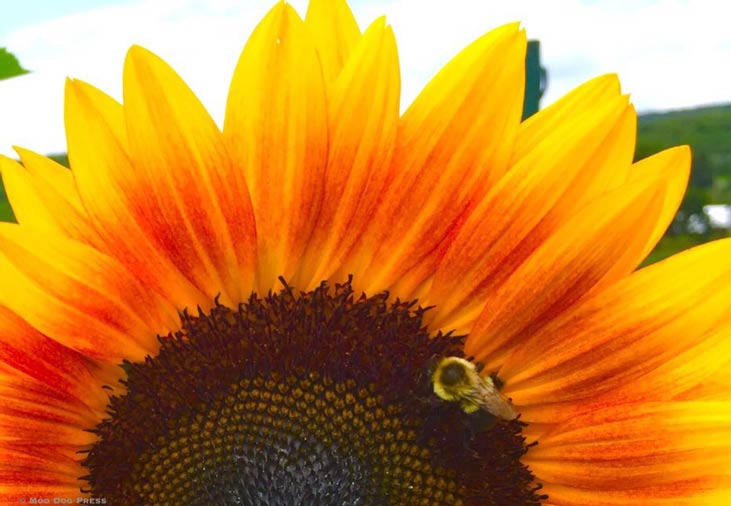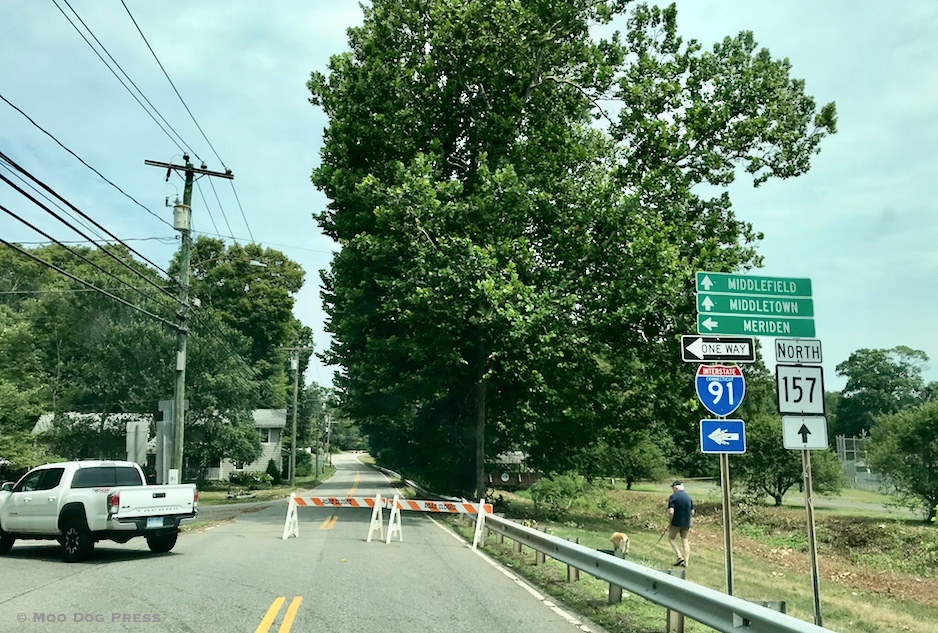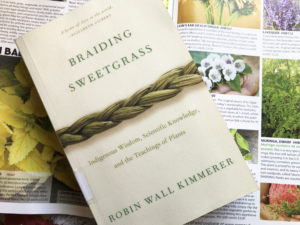COVID-19 Era: Feasting Wild • ‘This Book Is For You’ • New CT Trail Census
“To all the lost creatures in the world, this book is for you.”
Gina Rae La Cerva, Feasting Wild: In Search of the Last Untamed Food (2020) Greystone Books

Sunset and power transmission over wetlands and wild space. Which way, pandemic possibilities.
Reading the land. Walk. Learn. Write.
Recall the taste of wild trout, cleaned and broiled with a squeeze of lemon. Savor the memories of hand-cranked fresh cream and succulent peaches ice cream. Offered a ripe fig plucked from a branch while on a tour of a nearly edible landscape in Cromwell, Connecticut. An island created by the founder of a concrete company, his home offered trees, shrubs, gardens he knew by name and what delight each offered in season. Tenderloin of venison, rare; from a former farm adjoining hundreds of wooded acres, streams and rugged mountains of southwest Virginia, then sparsely populated. Homegrown tomatoes grown from Connecticut's rich earth, enhanced by years of compost gold with aged manures. All these thoughts surfaced while reading the work of author Gina Rae La Cerva.
Never more timely, her book Feasting Wild is a door that opens to the connections lost between human and environment, all life forms connected. Reading these pages is hearing stories that awake awareness and connect silos of knowledge. She is author a gifted photographer, scholar, writer, explorer on this one spectacular planet. If you think this is high praise, here is a sampling (also go see her website and see her life accomplishments and talent to date):
“My appetite drove me forward.
“This book is a collection of impressions, all caught in the same fine mesh, important because of their coincidence more than anything else. It can be read in two ways: as a tragedy or a story of hope. If you believe the tale is one of decline, you might discover a manufactured wasteland, If instead you wish to see promise, our closing landscape will be an untamable garden. Perhaps it will contain vestiges of both. The text of this book, like the book of nature, cannot offer a singular meaning.”
— page xvi, Prologue
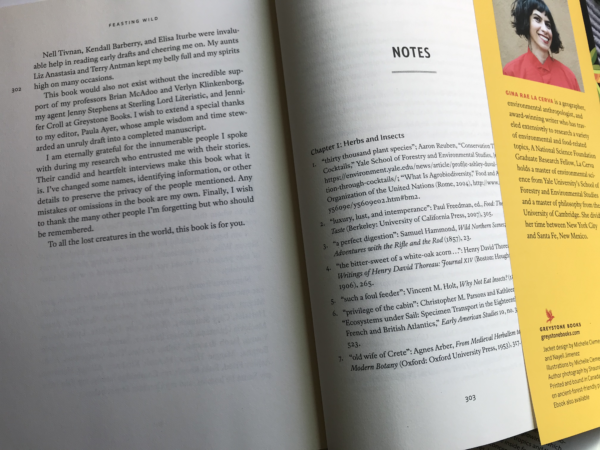
Feasting Wild, pages from a book that is about food, exploration, philosophy; a memoir and delight. Greystone Books (2020)
“As with foraging, it is only when you are looking for something very specific that you notice everything else that has been lost to the world.”
— page 4
(This applies to writers, photographers, artists, as well as foragers.)
The next paragraph about her lost wallet and her driver's license image, spectacular.
“…because the night before I had met Bill Murray in a bar, asked him for a job, confessed to him that I was in love with my best friend, and then threatened him into never revealing my secret. Who is this woman? Does she have a coherent life, beyond these broken pieces? Is there someplace she belongs?”
— page 5
In the time before the Internet, these quotes would've found their way into daybooks full of images and words and places and books, thoughts and phrases worth reviewing.
This book is a treasure. Find a copy, read and don't rush.
One more:
“The cave is hot and humid, with a persistent odor—not so much a smell but a feeling, like vinegar in the nose. A shallow river runs through the center of the gaping space. Crabs sidestep in the water. Bats swirl in sepulchral crevices. And everywhere, swiftlets.”
— p. 259
Such writing.
Linger over chapter 10, Wild Grass “I am on a train in Poland.” What could be, rivers and gardens, history, imagination, nature, food all intertwined.
La Cerva is on Twitter. Discovery means sometimes the front side of a feed is less revealing that the follows and likes. For those who will spend the time, true riches can be found by studying and sifting through these dimensional aspects which reveal choices. No judging, just browse. Other writers, photographers, sources, thought-provoking commentary. Learning and knowledge gleaned by patience and persistence, noteworthy by the interpretation takes thought. It is work, yet time stops will doing this.
So. Remembering that while out on riding, that jewelweed crushed and applied will help neutralize the caustic oil of poison ivy (it's the oil/sap that leads to itchy outbreak). Horses going through tall poison ivy get the sap on their legs and jewelweed gets it gone. Bob leaves will help alleviate stings. What else stands in front of humanity as leaves, stems, helpful plants, trees, shrubs, fungi. Etymology also gives clues to land, water, seasons, events. Indigenous names are everywhere. August. Evidence of the season transitioning to autumn includes black walnuts shaken loose by storm Isaias. Pears, apples, a tinge of color on trees that may be weakened by disease or insect damage.
Earlier this year, the remembrance of elderberries that once grew from discarded mash led to wanting to re-establish a stand of them. Imagine the surprise of finding several mature plants in the overgrown field. Clearing the briars and tangles of grape (don't worry, once tamped down the exuberant growth to let the elderberries breathe and find the sun). The plants (deciduous shrubs) now tower over humans awaiting the berries to ripen. Birds must've spread these wildings. Happy to share the bounty.
Loving land, water, sky, taking new trails is part of life. Like breathing, reading. So let's go slow this pandemic summer. Will share more books, business, people, news.
A notable effort is the Connecticut Trail Census, a project of UConn Extension, announced it is developing CT Trail Finder, a new one-stop web resource that will provide easy, fast, and centralized access to maps and reliable information about all of Connecticut’s trails.
“Slated to launch in May 2021, this new resource will be especially helpful for new hikers, walkers, and cyclists who may be looking for new and different trails, as many of Connecticut’s most popular trails are seeing significant increases in use in comparison to 2019, due to an increase of outdoor activity during the COVID-19 pandemic.
“A key feature that distinguishes CT Trail Finder from many trail websites and mobile apps is that all data is trail manager approved, so users will have accurate, dependable trail information direct from the source. CT Trail Finder also allows trail managers and land stewards to update their information in real time and communicate directly to users about any alerts such as parking constraints, access, and more.”
— Charles Tracy, UConn Extension
The app site currently includes Q&A including this one:
Q: We want to be the go-to resource for our trails. Will participating in CT Trail Finder dilute our authority?
A: No, the website works to highlight trail managers as the authority on their trails by listing trail manager contact information and only posting approved content. This distinguishes CT Trail Finder from many trail websites and mobile apps that use crowd-sourced information that may not be accurate. The website is also supported by leading conservation and recreation organizations, including Connecticut Forest and Park Association, Connecticut Department of Energy and Environmental Protection (DEEP), and National Park Service. Research shows that new users prefer an “official” resource to rely on as they learn about a new activity in the outdoors. CT Trail Finder will quickly become a recognized, centralized portal that can help users find you.
By the way, the University of Connecticut is a public research university, founded in 1881. The primary 4,400-acre campus is in Storrs, Connecticut. UConn Extension is part of the College of Agriculture, Health and Natural Resources, and is an incredible resource for individuals, communities, the state and region.
Their tagline (questions welcomed): “We work together with families, students, communities, businesses, farmers, and statewide partners. We educate. We bring together diverse groups to help solve problems.”
“The College of Agriculture, Health and Natural Resources evolved from the original Storrs Agricultural School, which was established in 1881. As Connecticut’s land-grant university, UConn has federal and state mandates to carry out the tripartite mission of teaching, research and outreach education. The Storrs Agricultural Experiment Station administers the College’s research programs, while the Cooperative Extension System works with 40,000 volunteers and eight county extension councils to provide outreach education to Connecticut citizens. College faculty, staff and students explore the interrelationships among food, natural resources and human and animal health, seeking to connect them in a manner that is economically viable and environmentally sustainable.”
— Also see CAHNR Fact Sheet.
Wild ponies, wild horses. In case you missed the history of the Chincoteague Pony Swim, a view into the past sheds light on the event (canceled in pandemic year 2020).
The Chincoteague Pony Swim might have been canceled this year, but check out this #ThrowbackThursday to the pony penning in 1959. #OnThisDay. Watch more archival films on "Reel America," every weekend on @cspan 3 or online: https://t.co/LzuMcPVIIs pic.twitter.com/z51VfLowSs
— American History TV (@cspanhistory) July 30, 2020
Sometimes it is good not to get what you think you want. In a landscape of grief to get through means acknowledging the depth of loss. The feeling of being stomach punched, of living through a nightmare that is real. Silence, no companionable communication that was a constant for more than 13 years.
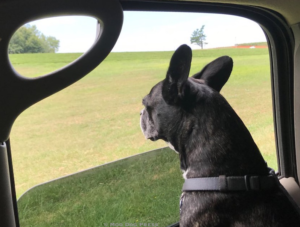
Remembered. My mother's words after losing her own mother when she was but a teenager, “How do I go on?” Does not compare at all, but a friend's death in a heavy-left helicopter crash, training for a mission that was never acknowledged publicly, but as active duty military that is life. Knowing what never makes the newspapers at that time. So at 22, he married his childhood sweetheart, brought her home to a carefully redone bungalow with his Ford Falcon (pristine) parked and waiting. Crash and burn, all done. A life just begun, and it was over. His funeral and the small box of his remains, Texas.
If you've read this far know that this time of upheaval and change applies tectonic pressure along humanity's fault lines. Cracks and fissures appear, but may reveal what has been hidden. All will shift and pass in time. What happens next will be shaped by all we've collectively learned along the way until a new generation matures and most forget again. (Not those who voraciously read and travel, though.) Working remote and all the solutions now possible were there all along. Waiting to be called into being.
Note: Always reading. On the table along with Walking With the Wind by John Lewis is Braiding Sweetgrass: Indigenous Wisdom, Scientific Knowledge and the Teachings of Plants by Robin Wall Kimmerer.

